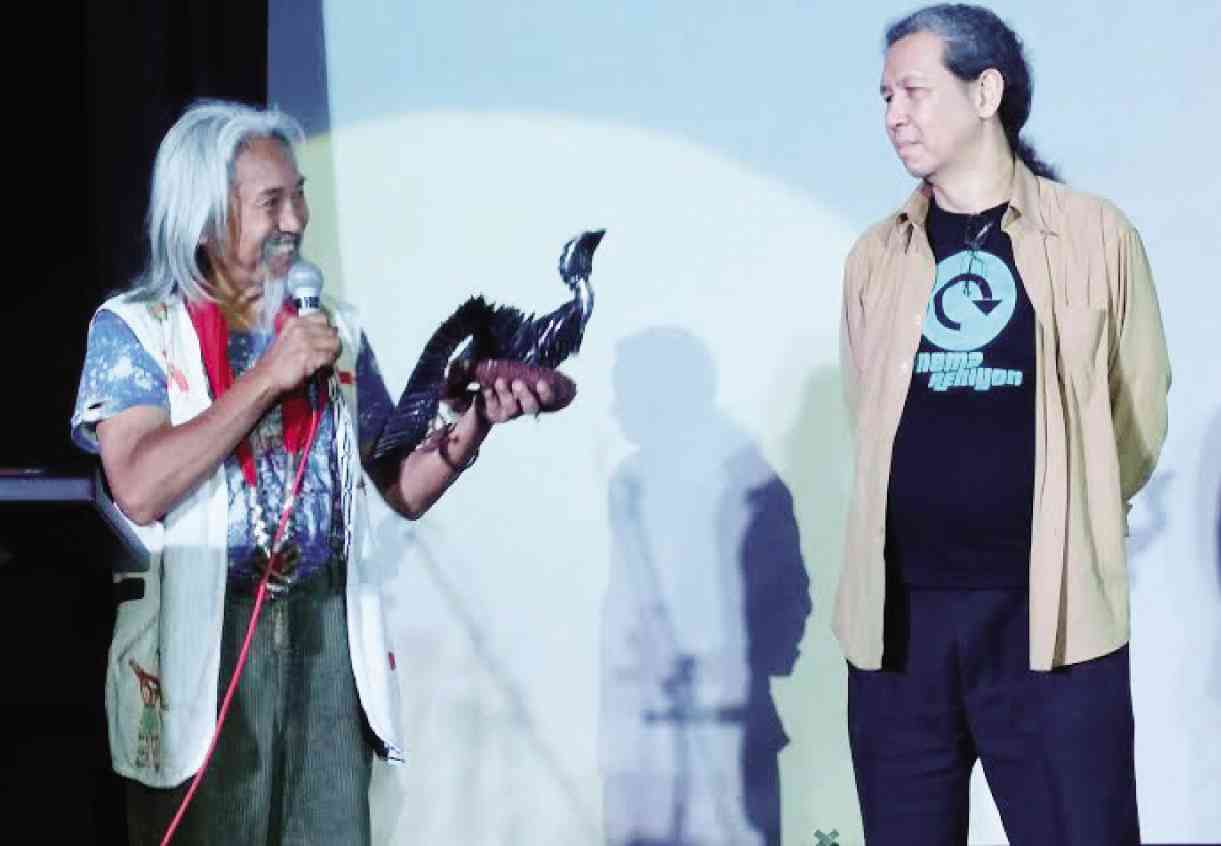
Whether producing a film in one’s native language, marketing their movies and even hawking DVDs to sell their works, or just trying to survive, regional filmmakers thrive in adversity.
The struggles of regional filmmakers—and their triumphs— were brought to the forefront during Cinema Rehiyon 7 in Cebu, with its theme “At the Crossroads of the Seventh Art.”
Jason Paul Laxamana’s third feature film, “Magkakabaung” (The Coffin Maker), has made the rounds of both local and international film festivals and has won best picture awards and accolades for actors Allen Dizon and Gladys Reyes.
The director said he had wanted to be a TV reporter or a VJ, but when Cinemalaya films started showing at the UP Film Theater, he thought he could do something like it.
It was after seeing Brillante Mendoza’s “Masahista” that he decided to use Kapampangan in his films.
He would then go on to make his own short films and upload these on YouTube. He apprenticed with mainstream directors including Maryo J. de los Reyes and Jeffrey Jeturian. Since then, he has had a film in every edition of Cinema Rehiyon, thereby earning the honorific of “most consistent filmmaker” from National Committee on Cinema (NCC) vice head Teddy Co.
In the Cordillera Administrative Region, Nestor Daguines and Rosendo Salvacio have produced six films across different genres. “Boyong” and “Sendong” act in their films, shoot, edit and market them in Benguet, carrying DVDs of their films in bags.
Before becoming a filmmaker, Boyong used to ply the La Trinidad-Urdaneta route as a truck driver. He was then inspired by Sendong’s “Talaw” and said that if a fellow Igorot could make a film, why couldn’t he.
Using relatives as actors, he then made “Christine,” a film inspired by a personal family story.

Sendong then saw the film and sought Boyong. Sendong asked him if he would be interested in collaborating. Boyong immediately said yes, admitting that he grew up idolizing Sendong.
During the forum “Re-Imagining Regional Cinema” at the Film & Media Arts International Academy in Cebu, the two revealed that making a film would cost them between P80,000 and P100,000. They would then go around Benguet and sell the DVDs from P130 to P150—selling at least a thousand copies so as to recoup what they spent to produce a movie.
But even as their story earned them applause from everyone in the room, Boyong sheepishly said that as he looked around, he couldn’t help but ask himself, “Are they really interested [in our film]?”
Their 2013 film “Bosu,” which tells the story of a tribal chieftain whose daughter’s death led to his conversion to Christianity, was one of the films screened to acclaim during Cinema Rehiyon.
Strong energy
“Wow, ang lakas ng energy,” said Kidlat Tahimik when he saw the people’s response to Cinema Rehiyon 7.
Kidlat, whose real name is Eric de Guia, presented his Berlinale-winning piece “Balikbayan #1: Memories of Overdevelopment Redux III.” It was Cinema Rehiyon’s closing film.
In an interview with the Inquirer, Kidlat said that in making the film, he hoped to raise public awareness that not everything written in history books was “correct.”
“So many things have been written about Ferdinand Magellan, but I’m more interested in his slave Enrique,” Kidlat said. “He could have been an islander, one of us, the first to circumnavigate the world and return home to the Philippines.”
The film took 35 years to finish, 23 more than Richard Linklater’s “Boyhood,” and is Kidlat’s tribute to the pre-Hispanic Visayans. It earned the Caligari Prize in this year’s Berlin International Film Festival.
“This should be what’s happening nationwide,” Kidlat said of Cinema Rehiyon. “Para mahiwalay tayo sa ‘American Idol filmmaking,’ which is how Filipinos perceive politics, economics, practically our way of life. In filmmaking, the Hollywood formula is what our producers here mainly do. But with the indie wave—and Cinema Rehiyon has always been an important contributing energy to it—the local point of view is given importance. Let the local story come, that’s what the world is waiting for, the unique perspective of our regional filmmakers.”
“We always work hard to continue Cinema Rehiyon because cinema in the region is national cinema,” said NCC chair William Mayo. “It is a showcase of the capabilities and pride of our people.”
Stronger together
The opening movie was the 1969 Famas best film nominee “Badlis sa Kinabuhi.” Cebuano acting royalty Gloria Sevilla won the Famas best actress award for the movie.
With daughter Suzette Ranillo, actress Pilar Pilapil, Julian Daan and Undo Juizan, Sevilla joined the forum after the screening and shared stories and views on the current state of regional cinema.
“Kung magkakaisa tayo, lalago ang Visayan films,” said Sevilla, the Queen of Visayan Movies, who received earlier that night the Hara Humamay Award from the Cebuano Cinema Development Council.
Ranillo and Pilapil received the Bulakna Award while Daan and Juizan received the Lapu-Lapu Award. The King of Visayan Movies, Matt Ranillo Jr., who died in a plane crash in 1969, was honored with the posthumous Rajah Humabon Award.
“Badlis sa Kinabuhi” was directed by Leroy Salvador and written by Junipher. It also stars Ranillo, Sevilla’s late husband; Felix de Catalina; Danilo Nuñez; Aurora Avilla; Siux Cabase; Frankie Navaja Jr.; and Remedios Atillio Alivio. It won best actress for Sevilla and best child actor for Navaja Jr., also at the 1969 Famas.
Thought to have been lost, a copy of the film was found by the Ranillos and restored in Australia, but with portions of the film missing the original audio.
Next year’s edition will be held in Naga City.
E-mail the author, [email protected].









































